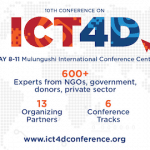Home Solar + Microfinance: Mitigating Risks and Maximizing Rewards
Many low-income households lack access to basic needs such as electricity, education, health care, clean water and finance. But while assistance to these low-income individuals is available, it is fair to say that the approach to serving them to date has been somewhat fragmented.
Historically, many different and often parallel programmes offered by governments, NGOs and donors have attempted to meet their needs with mixed success. In recent decades, these programmes have been complemented by the private sector, as social enterprises began targeting low-income households with low-cost products like solar lighting and cookstoves.
Instead of this piecemeal approach, imagine if low-income households could have all their basic needs met by one company that could deliver the services they need most in one package, at an affordable rate. While we are not quite there yet, Oikocredit’s Renewable Energy Unit is already seeing promising signs that this goal may be within our reach.
The evolution in home solar
In the last decade, solar lighting suppliers have provided lighting to households in low-income countries at a rapid rate, changing lives in tens of millions of off-grid households across the globe. Falling costs for solar cells and the increased efficiency of LED lights have enabled this technology to be delivered at lower costs than kerosene lamps and torch lights. This solar lighting has improved living conditions for households in a variety of ways, from better visibility and reduced smoke inhalation to fewer kerosene lamp accidents.
Solar home service providers have also started to introduce larger, more comprehensive systems that include lighting, telephone chargers and radios. These more substantial systems have the potential to further improve the quality of life for low-income households by boosting access to education and information and facilitating communication. However, the high cost of these home solar systems has deterred potential customers, many of whom have opted for simpler, more affordable lighting packages.
The role of microfinance in improving access
In emerging markets like India, microfinance institutions (MFIs) have successfully partnered with solar home service companies to bundle home solar systems with microfinance loans. While this did not initially result in increased energy access across most countries, the introduction of pay-as-you-go (PAYGO) or rent-to-own payment plans and improved mobile payments technology has drastically reduced barriers.
In recent years, the uptake in home solar systems has increased at rates only seen before in the mobile phone market. Some providers are even offering mobile payment systems alongside home solar systems to households that had previously never used these services.
Expanded access to home solar is already showing clear social impacts by enabling work and study after dark, improving living conditions, and increasing access to finance.
Innovations in home solar
The social potential of new home solar services does not stop here. New products and services are constantly being developed and added to home solar systems in response to the demands of low-income customers. Here are just some of the innovative approaches from our own portfolio:
- E-Hands, in addition to providing energy access to off-road, off-grid villages, is powering around 520 remote, rural branches of banks and MFIs in India, facilitating the financial inclusion of nearly 900,000 people in rural communities. These communities were previously difficult to reach, mainly due to the high cost of electricity generated by diesel generators.
- BBOXX in Kenya, along with bringing bright lights to around 250,000 people, is also selling larger home solar systems, including radios and televisions. These systems bring both entertainment and access to distance learning programs, while enabling around 63,000 children to study after sunset, and improving home security.
- SolarNow in Uganda, which sells PAYGO solar systems, currently services around 150,000 people and also provides small business appliances like hair clippers to their customers. The company is even piloting the sale of water pumps for irrigation using the PAYGO model.
- Other suppliers are piloting the provision of tablets and smartphones that bring education even closer to households, and can facilitate repeat loans when solar products are paid off. The Off-Grid Solar Market Trends Report 2018 estimates that the off-grid solar sector is now servicing around 360 million people globally, and lists a number of other solar powered appliances supplied by the sector.
- Onergy in India is going a step further on the energy ladder: They have also provided 250 larger systems on a community level, powering streetlights and heavier productive use appliances like agricultural processing machines. We have also seen that productive use appliances are becoming more efficient, so they can run at the low voltage and direct current that home solar systems provide.
- Cygni in India has developed slightly larger solar direct current systems at low cost and high efficiency, with a substantially higher voltage that can power more appliances, bridging the productive use gap from another angle. They have so far serviced around 95,000 people.
Most of these innovations have entered the market within the last few years, and are already improving the lives of large numbers of low-income households tremendously.
Changing needs, changing services
Although home solar cannot serve every basic need in all off-grid villages, especially in more remote areas, we are seeing clear signs that its social impact is broader than initially understood. We expect development and innovation in this area to continue, with more low-cost appliances and services that target basic needs coming to market. These products will benefit from a growing network of agents and the combined rollout of solar energy, mobile payment and telecommunication technologies, which have made previously difficult-to-reach areas more accessible.
With the sharp decline in costs of solar solutions and the broader product ranges, we expect to see an off-grid solar product available for almost every income level in the coming years, providing consumers with the chance to climb the “energy ladder.” Solar home service providers are preparing to meet this need by building up sales networks and client relations with more traditional solar products, which they will be able to augment with new products when clients prove to be reliable payers. This grassroots market-based approach allows customers to drive the provision of the goods and services they want most, while enabling small enterprises to thrive and minimising environmental impact. Meanwhile, the improved durability of solar products such as batteries will enable customers to pay off their initial purchases well before they need to replace them, saving money that can then be spent on other priorities.
The risks of a microfinance approach
Unfortunately, the expanding home solar market does not mean that every customer always gets the right product to fit their budget. There are low quality systems in the market that bring more disappointment than benefits. Potential customers are also sometimes tempted to buy a larger system than they can afford, or may suffer an income shock after a purchase has been made, hampering their ability to make repayments. If a customer receives a system on a payment plan and fails to make timely repayments, there is a risk that the solar system will be repossessed. This could lead to negative effects on personal relationships, in both the household and the wider community. Customers may even lose access to microfinance if the non-payment results in a credit default registration.
Solar home service companies are mitigating this social risk by introducing instruments that have become common in the microfinance industry, such as credit scores and flexible payment schemes. At Oikocredit, we encourage our partners to go a step further and adhere to the Smart Campaign’s Client Protection Principles – though we note that a customer-centric focus is already common among the organisations in which we invest, as they strive for high customer satisfaction scores to bolster further growth and social impact.
A bright future for communities, businesses and the environment
Although it’s not without risks, financing PAYGO companies to provide and fund home solar at scale generates mutual benefits for businesses and consumers, creating a market that fosters innovation and meets consumer needs in a way that minimises harm to the planet.
Beyond the traditional benefits of increased energy access, we see the systems provided by off-grid renewable energy companies as potential springboards for services like distance learning and health care. Ongoing innovation in the home solar market, in terms of solar products, add-on services and creative funding solutions, shows great potential to build on existing successes and improve the lives of large numbers of low-income people.
The social impact of home solar for low-income households has already proven to be significant, empowering low-income households through key tools for market participation and access to vital services. We look forward to seeing what the future holds.
Mark Roesink is an Investment Officer in the Renewable Energy unit at Oikocredit.
Photo provided by Oikocredit. Seamstress and Onergy client Suparna Samanta works after dark by solar light.
- Categories
- Energy, Social Enterprise



